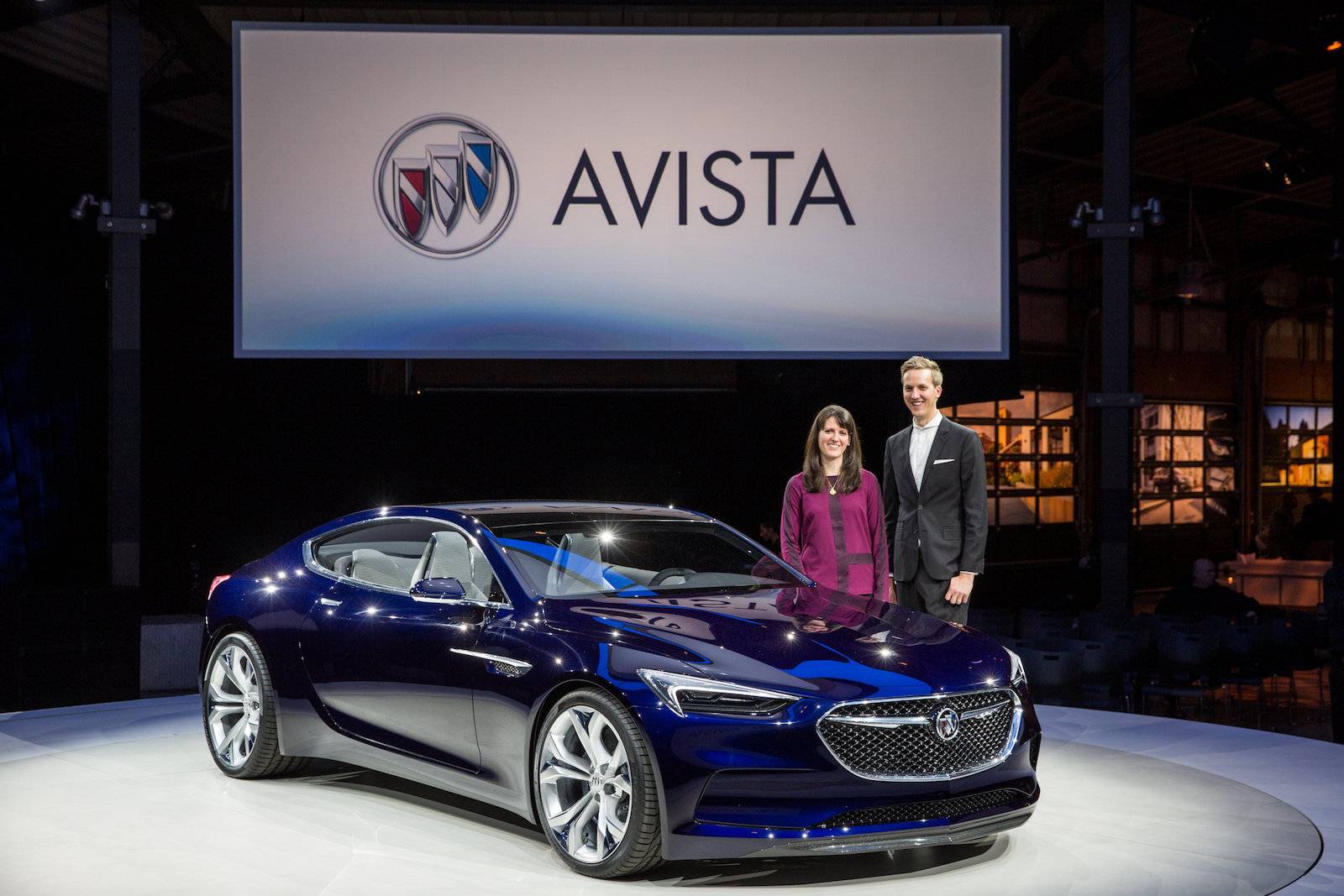Imagining the Buick Avista Concept Car
Insight from the designers who brought the brand’s stunning vehicle to life

If social media acts as an effective indicator of an event’s pulse then in many ways the Buick Avista represented the heart of Detroit Auto Show (officially known as NAIAS, or the North American International Auto Show). The striking concept car is well designed and highly nuanced, intentionally created to bring Buick back to its heritage as a design icon. The Avista’s design team blended sculptural forms and uninterrupted lines with technical and surface detail. To understand more about the car that would go on to win the show’s EyesOn Design Award for Design Excellence for a concept car for the second year in a row, we spoke with Buick’s Color and Trim Design Lead, Catherine Black and Interior Creative Designer John McDougall.

McDougall explains the impetus behind the Avista best: “it definitely was a passion project.” Both McDougall and Black received a “hazy brief” for the interior, when the exterior was only semi-baked design-wise. “We worked day and night to try to bring it to life; from the very beginning our vision of this was the concept of a perfect drive. What is the vehicle you’d want for the perfect drive? At GM we have the [Chevrolet] Corvette and the Camaro, but what is a beautiful thing from Buick that you would want to take on a mountain pass or an open road?” he asked. “For us, that’s what the Avista represents, inside and out.”
The design team aimed to have everything at the tip of drivers’ fingertips, something McDougall helped to realize. “You have the paddle shifters and metal accents right there,” he notes, as he walked us through the car’s interior. This would fuel the design innovation further, as “the 3D-printed shifters and door grabs speak to the modern technicality of the car, dynamically contrasted with the beautiful, broad forms. I think it is really a representation of where we want to take the brand and where we see Buick going in the future.” Together, that’s convenience and beauty at the forefront.

With the loose brief Black set to building the vehicle’s interior persona. “It became about really looking at what ambiance would people want to feel, how we want our driver to feel and what environment could help create that sense of well-being that is one of our brand pillars for Buick.” Black took to supporting the exterior’s sculptural forms and flowing lines, internally. In trying to strike a sporty but relaxed balance, Black looked to the ocean: “we were looking at environments from the ocean to the beach, and the blue waters and mists. Really getting that contrast to translate.”
On that balance, McDougall adds that “We talk about this sense of well-being a lot. This is an unfiltered vision of where we see the sportier side of the brand going. It’s represented through everything, the proportion, the interior, and the interior proportions with wide open spaciousness and strong technical elements. Things you might not expect in a Buick.” Ultimately, he emphasizes that “you’ll see harmony” when you look at the Avista.

Another unexpected design statement is a lack of wood, something many have come to associate with the brand’s interiors, long a signifier of warmth. Black makes clear that in its absence “we are bringing in the warmth with the leather and the other premium materials, but also with the softness and richness of the details. It’s a cool interior, but it’s inviting—not harsh or stark.”
McDougall returns to the ocean metaphor. “The perforation pattern feels very rippley. You’re at a beachfront and you see the sand and the water coming together, I think we see the textures that you see in sand and the ripples created by the wind.” In a way, exterior and interior exist in contrasts. From the outside, the door is a broad, open sculpted surface. Inside, McDougall explains, “you have this super technical and detailed, 3D printed surface. That’s the dynamic we wanted to show.” Altogether, there is a cohesion where even the nuances of the grille appear in the patterns and the headlamps and tail lamps. “It was all encompassing,” McDougall concludes, “and all three of the studios [involved in the Avista’s design] were really collaborating and referencing what the others were doing.”
We’d be excited to see the Avista and last year’s Avenir as production models that may be appealing to people who haven’t considered the brand recently (or ever).
Catherine Black and John McDougall image by John F. Martin for Buick, all other images courtesy of GM












